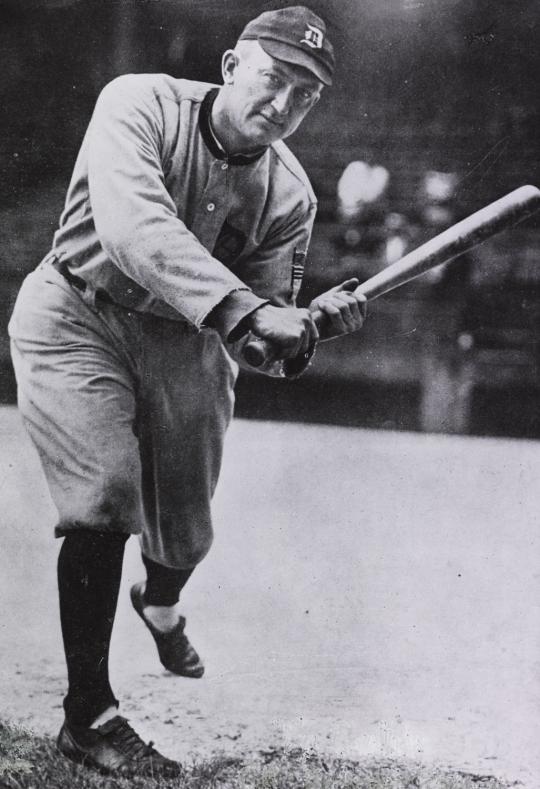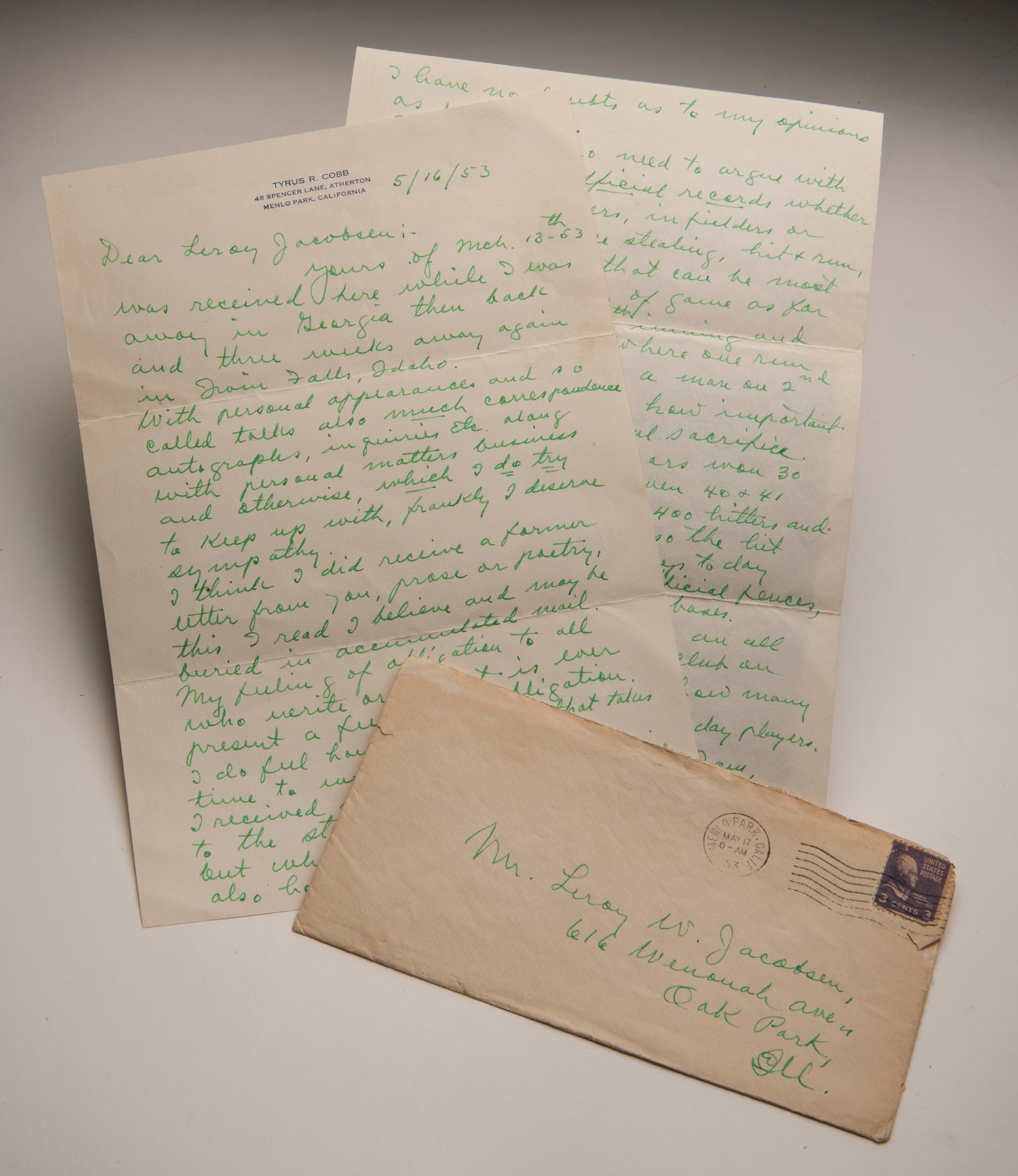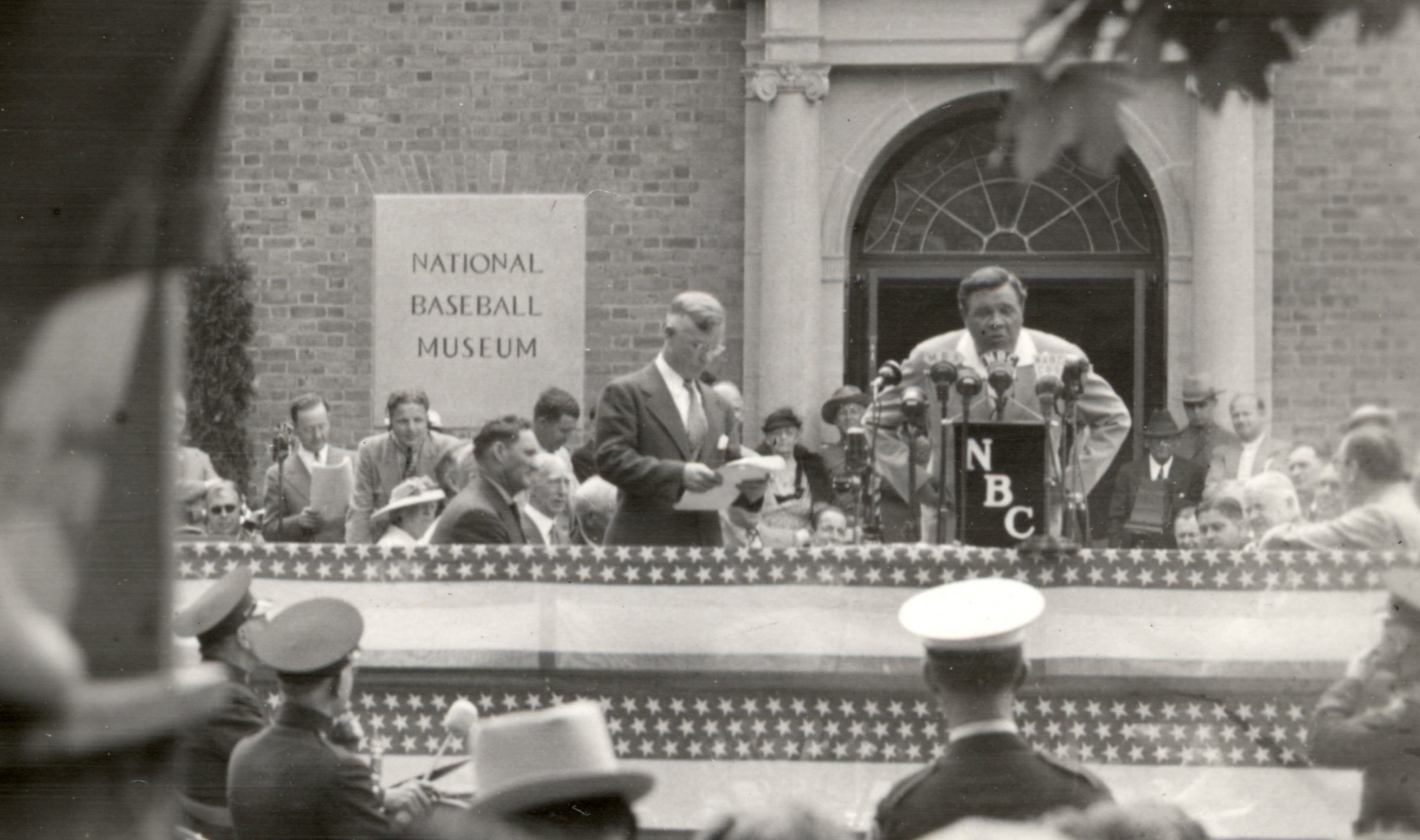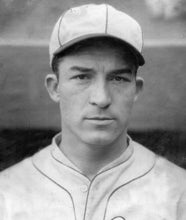- Home
- Our Stories
- Cobb proves his power with three-homer game
Cobb proves his power with three-homer game
By 1925, Ty Cobb had mourned the loss of the “small ball” style of the National Pastime for several seasons.
But on May 5 of that year, Cobb proved he could successfully play any style the game presented.
In a Tuesday game at Sportsman’s Park in St. Louis, Cobb hit three home runs while going 6-for-6 at the plate to lead his Tigers past the Browns 14-8. Batting third and playing center field, Cobb hit a two-run home run off Bullet Joe Bush in the first inning, clubbed another two-run shot against Elam Vangilder in the second, doubled in the fourth, recorded an infield single in the sixth, homered in the eighth off Milt Gaston and reached on another infield single in the ninth.
All three home runs went over the fence.
It amounted to 16 total bases, breaking the old modern era (post 1900) mark of 15 set by High Pockets Kelly in 1923. It was only the fifth six-hit game in the American League since 1903.
“Well, the old game is gone,” author Grantland Rice quoted Cobb as saying – as he watched Babe Ruth during batting practice in 1924 – in Rice’s 1954 autobiography The Tumult and the Shouting. “I guess more people would rather see Babe hit one over the fence than see me steal second.
“I feel bad about it, for it isn’t the game I like to see or play.”
Cobb, however, continued to star even in the new Live Ball era. At the age of 38 in 1925 – and in his fifth season as the Tigers’ player/manager – Cobb hit .378 with 97 runs scored, 102 RBI and an American League-leading 1.066 OPS in 121 games. His .598 slugging percentage ranked third behind league leader Ken Williams of the Browns (.613) and future Hall of Famer Al Simmons (.599).
Although Ruth missed much of the 1925 season with an illness, Cobb still recognized the power of the Sultan of Swat.
“This game is all power. But they’ll never be another power man like this fellow,” Cobb told Rice. “Just watch the ball next year. They’ll start juicing it up like a tennis ball because Ruth has made the home run fashionable.
“A lot of these kids, in place of learning the true science of hitting or base running, are trying to knock every pitch over the fence.”
Cobb’s total of 12 home runs in 1925 tied a career-best he set four years earlier – the only two seasons of his career where he reached double-digit totals in round trippers. But even while playing the small ball game, Cobb posted a career slugging percentage of .512 and recorded 1,944 RBI – the top modern era (post 1900) total at the time of his retirement and a figure that remains in the Top 10 all-time.
Cobb’s three-home run day was just the seventh three-home run game of the modern era, with the first coming off the bat of the Browns’ Williams in 1922. Mickey Cochrane of the Athletics and Goose Goslin of the Senators added three-homer games later in the 1925 season.
But Cobb wasn’t satisfied with just a one-day power explosion. One day after his three-homer outburst, Cobb hit two more against the Browns. In all, Cobb recorded nine straight hits over the two games.
Cobb retired following the 1928 season with a career batting average of .366. He was one of the first five players elected to the Hall of Fame in 1936.
“He came to play,” Dodgers executive and former big league infielder Fresco Thompson said upon Cobb’s passing in 1961. “And he came to beat you.”
Craig Muder is the director of communications for the National Baseball Hall of Fame and Museum








